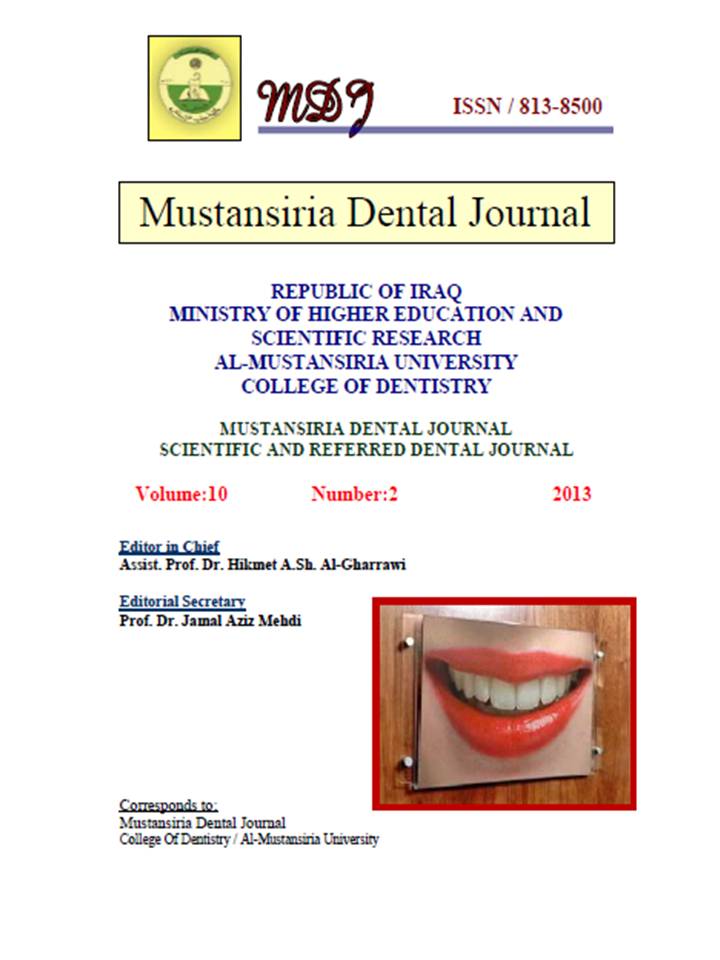Evaluation of three novel retrograde filling materials (Microleakage study)
DOI:
https://doi.org/10.32828/mdj.v10i2.224Keywords:
Key Words: Retrograde filling, MTA, Apical leakage, endodontic failure.Abstract
The aim of this study was to compare apical microleakage of MTA following
reverse retrograde root filling with that following Alumina Cement, Light Cement,
Zenium HMP retrofilling. The root canals of 42 extracted teeth were instrumented and
obturated with vertically condensed gutta-percha. Each tooth was apically resected
and the apex was prepared by fissure bur to 2 mm depth and the root surface isolated
with nail varnish. Teeth were divided randomly into four groups of 10 teeth each.
First group was retrofilled with MTA, second group with Alumina Cement, third
group with Light Cement, and the fourth group with Zenium HMP. Following
immersion in 2% Fuchsine dye for 72 hours, the roots were sectioned and the depth of
dye penetration was evaluated by a Global stereomicroscope at x70 magnification.The
sealing effectiveness of the retrograde filling materials was determined by their ability
to inhibit dye penetration. Results showed that the least leakage for zeniuum HMP
cement with a mean of 0.6, MTA with a mean of 1.0, light cement with a mean of
1.10, alumina cement with a mean of 1.50 with the most leakage. However, these
differences were not seen to be statistically significant using the Kruskal Wallis Test
or the Mann Whitney Test. It was concluded that Zenium HMP cement provides a
better seal than MTA and Light Cement and Alumina Cement when used as
retrograde filling.

Downloads
Published
Issue
Section
License
The Journal of Mustansiria Dental Journal is an open-access journal that all contents are free of charge. Articles of this journal are licensed under the terms of the Creative Commons Attribution International Public License CC-BY 4.0 (https://creativecommons.org/licenses/by/4.0/legalcode) that licensees are unrestrictly allowed to search, download, share, distribute, print, or link to the full texts of the articles, crawl them for indexing and reproduce any medium of the articles provided that they give the author(s) proper credits (citation). The journal allows the author(s) to retain the copyright of their published article.
Creative Commons-Attribution (BY)








